31 Best Oxygen-Rich Foods: Fruits, Drinks, Veggies, And Proteins
Count on your diet to nourish you with this life-saving and health-boosting essential.
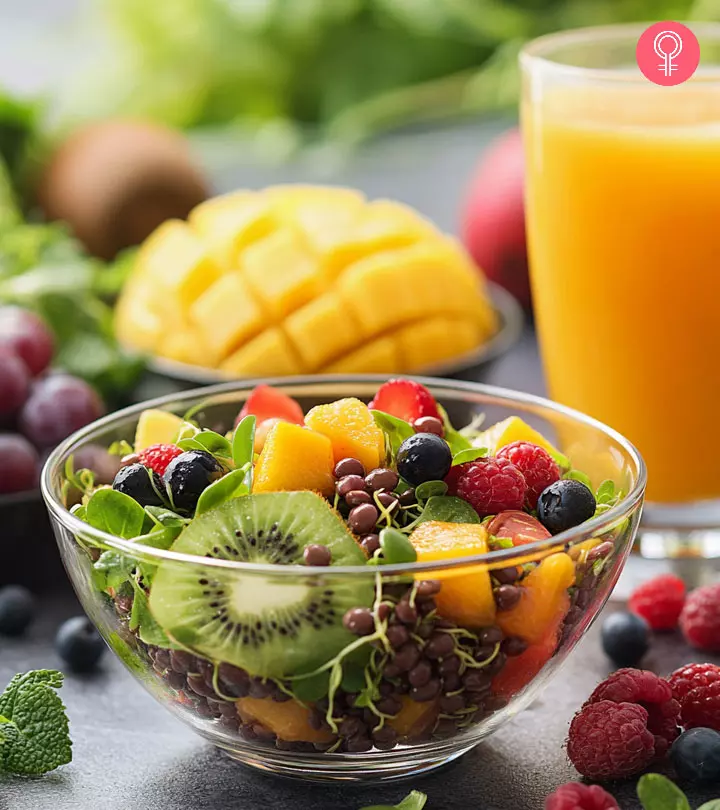
Image: Midjourney/ StyleCraze Design Team
Consuming oxygen-rich foods can help in growth and sustaining life (1). It is vital to maintain 94-98% oxygen saturation in the blood to prevent hypoxia and tissue damage (2), (3). Hypoxia or low oxygen saturation may lead to asthma, lung disorders, COVID-19 complications, fibromyalgiai A disorder characterized by widespread musculoskeletal pain accompanied by fatigue and issues with sleep, memory, and mood. , and heart disease or may worsen an existing health problem (4), (5), (6), (7), (8). Checking your oxygen saturation levels regularly with a pulse oximeter, getting medical attention, and adding foods rich in oxygen can be of tremendous help.
This article lists the 31 best foods – including fruits, proteins, vegetables, and drinks – you may consume to boost your blood oxygen levels. Maintaining your oxygen levels is important for your health, as it helps cellular function, boosts energy, and improves brain function. Eating foods that increase oxygen in your body may improve oxygen levels and lead to better health. Scroll down to take a look.
In This Article
How Foods Help Boost Oxygen Levels
It is important to understand why certain foods help improve oxygen levels. These foods are not “oxygen-rich” per se. They contain vitamins, minerals, and molecules and have an alkaline pH, essential for maintaining optimal blood flow and oxygen levels in the body.
The foods to look for must be rich in vitamins A, B2, B3, B5, B9, and B12, minerals like iron and copper, and the molecule nitric oxide. Choose alkaline foods that reduce the risk of stroke and hypertension, improve heart and brain function, and activate vitamin D (9).
Let’s get started with the list of foods to consume to boost the oxygen levels in your blood. Scroll down.
Key Takeaways
- Foods that are rich in vitamins and minerals and have an alkaline pH help maintain optimal blood flow and oxygen levels in the body.
- Fruits like avocados, kiwi, mango, and pineapple and vegetables like sweet potato and broccoli are the best for improving oxygen levels.
- Consuming protein-rich foods like eggs, legumes, meat, fish, mushroom, nuts, and dairy also helps boost the oxygen level in your body.
31 Best Foods To Improve Oxygen Levels
10 Fruits To Boost Oxygen Levels
Looking for a natural way to enhance your oxygen levels? Fruits can be a delicious part of the solution. Find out how to increase the oxygen levels in your blood with these tasty natural treats that not only help your body breathe easier but also boost your overall well-being. Check out our top picks below!
1. Avocados
Avocados are rich in vitamins A, B3, B6, B12, choline, folate, polyunsaturated fatty acids (PUFAs)i Fat molecules (containing more than one double bond in their chemical structure) that may have beneficial effects on blood pressure. , and dietary fiber
. These nutrients help boost oxygen levels, reduce cholesterol, promote a healthy heart, control blood sugar levels, improve lipid profile, protect DNA, prevent osteoarthritisi Degeneration of the joint muscles that causes pain and stiffness in the joints eventually leading to mobility issues , improve eye health, and help in weight management (10).
Consume half an avocado every day in smoothies, salads, or delicious tacos to give your oxygen levels a boost and improve your overall health.
2. Pomegranate
Pomegranates contain iron, copper, zinc, vitamins B3 and B6, and choline
(11). They improve blood flow by increasing nitric oxide bioavailabilityi The capacity of a substance, drug, or food to be absorbed and utilized by the body effectively to attain its complete benefit. and boost oxygen delivery (12). Consuming pomegranate kernels or freshly pressed pomegranate juice helps dilate the blood vessels, enabling improved blood flow (13). This reduces the risk of tissue damage due to low oxygen saturation.
Consume a cup of pomegranate kernels, drink 375 ml of pomegranate juice per day, or add it to salads and include this oxygen saturation-improving alkaline food in your diet.
3. Kiwi
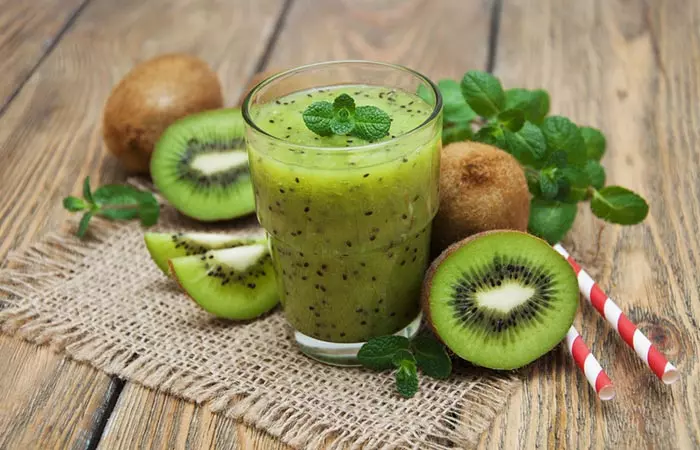
This sweet ’n sour juicy tropical fruit is a good source of dietary fiber, copper, iron, vitamins A, B3, B5, B6, and C, choline, and several antioxidants. Kiwifruit helps prevent DNA damage, boosts the immune system, reduces the severity and duration of upper respiratory infections in the elderly, and lowers inflammation (14).
Consume a large kiwi per day. You can also add it to smoothies, juices, and salads to increase the consumption of vitamins and minerals that help increase oxygen saturation in the blood.
4. Cantaloupe
Cantaloupe is a great source of vitamins A, B3, B5, B6, C, choline, folate, iron, and antioxidants (15). This fruit is low in sugar and can be consumed by people with high blood sugar levels. It also has anti-inflammatory and immunity-boosting properties (16).
Consume a cup of cantaloupe or make a smoothie to improve oxygen levels in the body.
5. Mango
Ripe mangoes are rich in vitamins A, B3, B5, B6, and C, and iron and copper essential for upping blood oxygen saturation levels.
They contain antioxidants like vitamin C, carotenoids, and phenolic compounds that help maintain overall health (17). Mangoes have hypotensive, anti-inflammatory, hepatoprotective, and immunity-boosting properties (18).
Consume half a cup of ripe mangoes, toss them with breakfast fruit bowls, or make a smoothie. People with diabetes must consult their doctor before consuming ripe mangoes as they have high sugar content.
6. Peaches
Peaches are loaded with vitamins A, B3, B5, and B6, iron, zinc, and antioxidants that prevent free radical damage and help maintain proper body functions. These delicious summer fruits are touted as functional foods due to their capacity to promote overall health (19), (20).
Consume a whole large peach a day or every other day. You can also add it to your juices, smoothies, or cold salads.
7. Pineapple
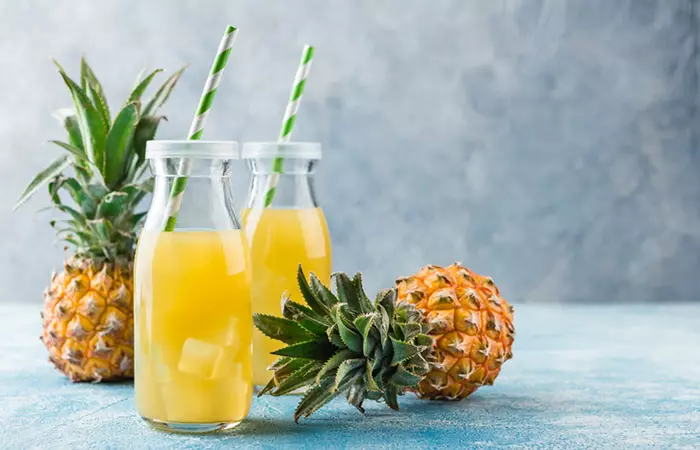
Pineapples are an excellent source of vitamins A, B3, B5, B6, and C, copper, iron, potassium, zinc, choline, folate, and beta-carotene (21). These sweet and juicy tropical fruits help increase the permeability of the blood vessel walls to oxygen and other nutrients. The active component of pineapple, bromelain, also helps reduce inflammation and prevents blood clot formation (22).
Consume a cup of pineapple as is, or add it to smoothies, juices, and salads.
8. Berries
Blueberries, strawberries, and raspberries are great sources of vitamins A, B3, B5, B6, and C, iron, potassium, copper, zinc, choline, folate, and antioxidants (23), (24), (25). Berries also help reduce inflammation and lipoprotein-cholesterol levels and improve insulin sensitivity (26).
Consume a cup of organic or locally grown mixed berries every day. Include them in fruit bowls, smoothies, and juices.
9. Figs And Dates
Dried figs and dates are loaded with iron, copper, potassium, vitamins A, B3, B5, and folate (27), (28). These nutrients help boost immunity and improve cognitive abilities. Dates and figs are rich in polyphenols with antioxidant properties and help reduce free radical damage and oxidative stressi The imbalance between the production and accumulation of reactive oxygen species (unstable oxygen molecules) to prevent neurodegenerationi A condition characterized by the dysfunction and eventual death of brain cells caused due to aging or other factors. and provide therapeutic effects (29), (30).
Consume 1-2 medjool dates and a couple of dried figs with smoothies. People with diabetes must consult their doctor before consuming dried figs and dates as they have high sugar content.
10. Citrus Fruits
Citrus fruits are rich in vitamin C, an antioxidant that helps develop hemoglobin-based oxygen carriers (HBOCs)i An artificial blood substitute created using molecules of hemoglobin (Hb), the oxygen-carrying protein found in red blood cells. . Several secondary metabolites, such as alkaloids, coumarins, phenol acids, flavonoids, limonoids, and carotenoids, present in citrus fruits are also highly beneficial for human health. They have anti-inflammatoryi Any substance that reduces inflammation (redness, swelling, or pain) or the associated symptoms in the body. , and antioxidant properties, and help maintain your cardiovascular health, prevent nerve cell damage, and expand your blood vessels to improve blood flow (31).
Include limes, lemons, tangerines, oranges, and grapefruits in your diet. You can juice them or add them to salads.
Scroll down to learn more about vegetables with similar benefits.
9 Vegetables To Boost Oxygen Levels
1. Beetroot
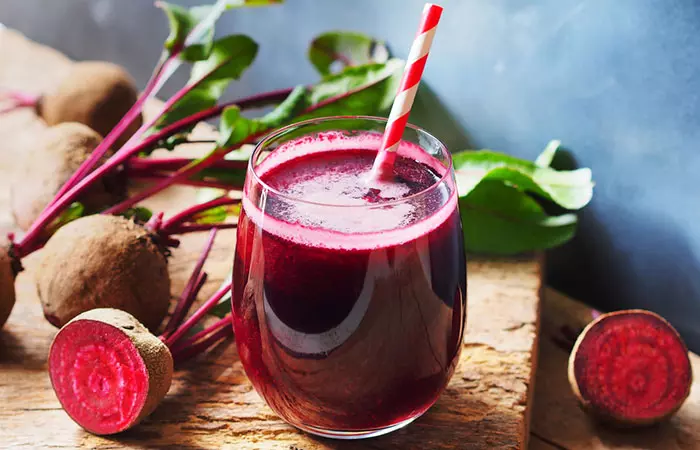
Beetroots contain naturally occurring nitric oxide that helps dilate the blood vessels and enables unhindered oxygenated blood flow to the tissues. This is the reason beetroot juice is a hit amongst fitness enthusiasts. Several studies also show that beetroot juice can help reduce hypoxia (32), (33).
Consume half a beetroot every day, either raw or boiled. You can toss a few slices in your soup, add it to salads, or make a beetroot smoothie.
2. Carrot
Carrots are rich in vitamins A, B3, B5, B6, and C, choline, potassium, iron, zinc, and copper (34). They also contain phytochemicals that possess anti-inflammatory and antioxidant properties, crucial for detoxifying the body and increasing oxygen supply to the tissues (35).
Consume baby carrots as a snack. You can also add them to salads. Make carrot cakes or toss a cup of roughly chopped carrots into your mixer to prepare carrot juice.
3. Spinach
The queen of leafy greens, spinach, is loaded with iron, vitamins A, B3, B5, B6, and C, and many antioxidants (36). Spinach nullifies the reactive oxygen species, reduces oxidative stress and inflammation, and has hypoglycemic (lowers blood sugar levels) and hypolipidemic (lowers blood lipid levels) properties (37).
Consume a cup of baby spinach in the salad. You can also toss it in the blender to make a smoothie (check out the recipe of a delicious spinach and kiwi smoothie in the “drinks to boost oxygen levels” section).
4. Garlic
Garlic is known to promote heart health. It has lipid-lowering, antimicrobial, and antiplatelet properties (38). A study found that garlic consumption could improve baseline arterial oxygen levels and reduce hypoxemia in people with hepatopulmonary syndrome (HPS), a condition affecting the lungs of patients with liver disease (39).
Consume at least one clove of garlic every day with food. You can add it to marinades or curries or even chew it raw.
Note: Avoid consuming garlic if you are on anticoagulants.
5. Sweet Potato

Sweet potatoes with orange or purple flesh contain vitamins A, B3, B5, and B6, iron, copper, anthocyanin, and beta carotene (40). Consuming sweet potatoes help reduce arterial oxidative stress (a disorder caused by oxidative damage of proteins, lipids, and DNA) and arterial stiffness (stiffening of large arteries that increases the risk of cardiovascular diseases) (41).
Consume mashed, baked, or air-fried sweet potatoes as a snack, in salads, or side dish.
6. Beans
Beans are legumes that contain a high amount of iron, which is crucial for oxygen transport, DNA synthesis, and other metabolic processes (42). They are loaded with potassium, calcium, and dietary fiber (43).
Consume blanched or boiled green, black, and dried beans in salads and curries to enrich your meal with iron and other important nutrients to increase oxygen levels in your body.
7. Broccoli
Broccoli is loaded with antioxidants and has phytochemicals that help inhibit inflammation (44). An experiment confirmed a proof-of-concept that broccoli helps prevent severe COVID-19 (45). However, further studies are required to solidify this proof-of-concept.
Consume half a cup of blanched broccoli florets every day or every other day in salads to reduce oxidative stress and inflammation in the body.
8. Lettuce
Lettuce is a great source of vitamins A, B3, B5, B6, and C, folate, iron, potassium, and zinc (46). It is rich in antioxidants, such as carotenoids and vitamins E and C. An animal study has shown that lettuce consumption prevents tissue damage caused by oxidative stress(tissue oxidation), improves synthesis of lipids (lipid metabolism) and reduces the risk of cardiovascular diseases (47).
Consume fresh romaine or iceberg lettuce with salads to add crunch to your food and protect your health.
 Did You Know?
Did You Know?9. Swiss Chard
Swiss chard contains high levels of nitrates (49). These nitrates actively convert into nitric oxide in the body, which helps the blood vessels expand to allow more blood to flow through and lower blood pressure. Nitrates from dietary sources also may potentially treat cardiovascular disease by generating nitric oxide in areas where oxygen is deficient (50).
You can add raw Swiss chard to salads. You also may saute its leaves in olive oil and herbs for 5 to 7 minutes and enjoy it as a side dish. You may even use it in soups and stews or add it to your green smoothies for an extra boost of nutrients.
Apart from consuming fruits and vegetables, adding protein to your diet is important. The next section lists out 7 protein sources that also help in improving oxygen levels in the body. Scroll down.
7 Protein-Rich Foods To Boost Oxygen Levels
1. Eggs
Hard-boiled eggs are excellent sources of iron, zinc, potassium, protein, selenium, vitamins A, D, B5, B6, B12, E, and K, folate, and beta-carotene (51). While egg yolks are infamous for their high cholesterol content, a study showed they have anti-inflammatory and analgesic properties (52).
Consume 3-5 whole eggs per week. If you have high cholesterol levels, avoid or limit consuming egg yolks.
2. Legumes
Legumes, such as lentils, chickpeas, kidney beans, pinto beans, navy beans, fava beans, and bean sprouts, are rich in iron, potassium, zinc, and B vitamins. They are great sources of plant-based protein and fat-free. Consuming legumes helps lower hypertension, control blood sugar in people with type 2 diabetes, improve lipid profile, and aids weight management (53).
Consume half a cup of legumes of your choice every day to improve blood flow and oxygen supply to all body parts.
3. Mushrooms
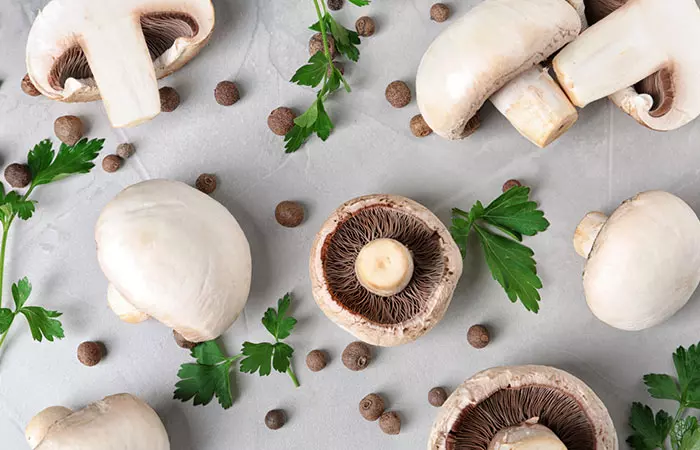
Mushrooms are one of the best sources of dietary protein and contain iron, zinc, calcium, potassium, copper, magnesium, selenium, and vitamins B3, B5, and B6, C, and D (54). The beta-glucans present in mushrooms have antioxidant and anticholesterolemic (lowers plasma cholesterol levels) properties and prevent nerve damage. Mushrooms also dilate the blood vessels, prevent blood clot and formation of fatty deposits in arteries, and have anti-inflammatory effects (55).
Consume half a cup of mushrooms 2-3 times a week. Saute it before adding to salads or soups. If you have arthritis, talk to your doctor before consuming mushrooms.
4. Meat And Fish
Meat and fish are good sources of vitamins B12 and B3, iron, zinc, selenium, calcium, protein, and omega-3 fatty acids (56), (57). Consuming lean meat such as chicken breast or skinless chicken, limiting the consumption of red meat, such as beef, pork, lamb, and including fatty fish like salmon, tuna, mackerel, carp, and sardines in the diet can help improve vascular health, bone strength, and oxygen transport (58), (59).
Consume grilled or baked skinless chicken breast (3 oz), fat-free meat, or fatty fish of your choice with a cup of green veggies to improve oxygen levels and overall health. Avoid processed meats, such as salami and sausages.
5. Organ Meat
Organ meat such as the liver, heart, tongue, and brain have high nutrition content. It contains vitamins B3, B6, B12, and D, copper, iron, zinc, proteins, monounsaturated fatty acids (MUFAs)i Fat molecules (with one double bond in their chemical structure) that help reduce the risk of cancer, inflammation, and insulin resistance. , and polyunsaturated fatty acids (PUFAs) (60).
Consume organ meat once a week or once in two weeks to get the required nutrients to improve your oxygen levels. Avoid organ meat if you have high cholesterol or arthritis.
6. Dairy
Milk, yogurt, and clarified butter (ghee) are loaded with calcium, zinc, B vitamins, vitamin D, probiotics, proteins, and healthy fats (61). Low-fat dairy products can help reduce the risk of cardiovascular disease and type 2 diabetes (62).
Consume half a cup of yogurt or frozen yogurt, a glass of milk (375 ml), and one teaspoon of ghee to get the essential nutrients from these dairy products required for improved oxygen levels.
7. Nuts And Sunflower Seeds
Nuts and sunflower seeds are great sources of iron, copper, zinc, calcium, vitamins B3, B5, B6, and E, proteins, dietary fiber, and polyunsaturated fatty acids (63), (64). These nutrients help improve oxygen flow and transport oxygenated blood to the other body parts from the heart. They also help control blood pressure, lower cholesterol levels, reduce the risk of metabolic syndromes, and boost vascular activity. They have antioxidant, anti-inflammatory, and anti-hypertensive properties (65) (66).
Consume 2-4 soaked almonds, two walnuts, 3-4 pecans, and a handful of ground sunflower seeds with breakfast or in salads. You can also eat cashew nuts. However, avoid them if you have high cholesterol.
 Quick Tip
Quick TipApart from the above-mentioned ingredients, superfoods like quinoa also may help improve oxygen levels in the body (67).
These are the fruits, vegetables, and protein sources that help improve oxygen levels in the blood. You can also consume drinks made with a few foods mentioned above. Scroll down to learn the recipes of the five best drinks to boost oxygen levels.
5 Drinks To Boost Oxygen Levels
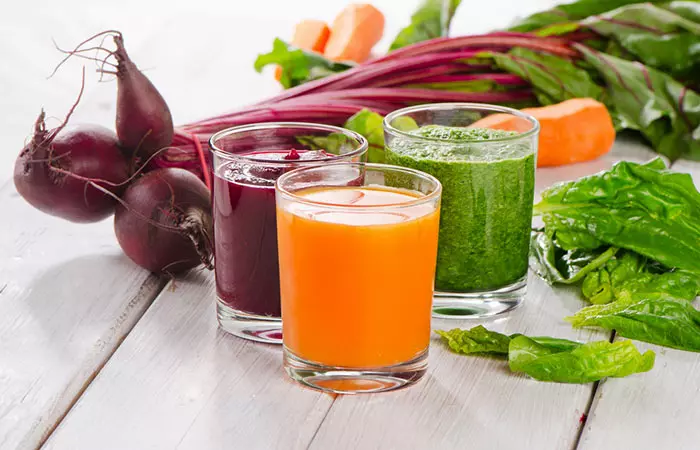
1. Beetroot And Lime Juice
How To Prepare
- Blitz half a large, peeled beetroot into a blender and strain the juice.
- Add the juice of half a lime and a pinch of black salt.
- Stir well and drink in the morning.
Avoid this drink at night as it may cause throat discomfort.
2. Pomegranate And Peach Smoothie
How To Prepare
- Toss a cup of pomegranate kernels into a blender.
- Blitz and strain the juice into a glass.
- Blitz half a cup of roughly chopped peach and mix with the juice.
- Add a pinch of black pepper and Himalayan pink salt.
- Stir well and sip!
3. Pineapple, Dates, And Seeds Smoothie
How To Prepare
- Blitz a cup of pineapple cubes, a date, and a tablespoon of sunflower seed powder in the blender.
- Pour it into a glass. Enjoy!
4. Carrot And Orange Smoothie
How To Prepare
- Peel and roughly chop one large carrot.
- Toss it into a blender.
- Add in a large, whole, peeled orange.
- Blend well and pour it into a glass.
- Add a hint of lemon juice and a pinch of black salt to it.
- Stir well, and drink.
5. Spinach And Kiwi Smoothie
How To Prepare
- Toss a cup of washed baby spinach into the blender.
- Roughly chop two large kiwis (with or without the peel).
- Add it to the blender and blitz.
- Pour the juice into a glass, add the juice of half a lime, and a pinch of black salt.
- Mix well and enjoy!
While oxygen-boosting drinks may help improve circulation and enhance oxygen levels, you should complement them with a well-balanced diet rich in essential nutrients. Scroll down to know more.
Essential Dietary Practices For Optimal Oxygen Transport
Maintaining proper hydration ensures effective oxygen delivery by preserving blood volume and circulation. But, pairing oxygen-rich drinks with a balanced diet comes with a set of benefits, such as:
- A balanced diet supplies essential nutrients that promote cellular respiration and oxygen delivery.
- Iron is crucial for hemoglobin production. Heme iron (from meat and seafood) is easily absorbed, while non-heme iron (from plant sources) requires vitamin C for better absorption. So consuming meat and seafood may be a better solution than only drinking iron–rich smoothies made with plant sources.
- Steer clear of processed foods high in sugar and trans fats to avoid poor circulation and inflammation.
Infographic: Health Benefits Of Consuming Oxygen-Rich Foods
Including the foods mentioned above in your diet may help improve your overall body functioning and offer various health benefits.
The following infographic provides a snapshot of how these foods may help you stay healthy. Check it out!

Illustration: StyleCraze Design Team
There are no oxygen-rich foods per se, but the foods listed above have an alkaline pH and contain minerals, vitamins, and molecules that play a key role in ensuring optimal blood flow and oxygen levels in the body. These foods, like avocado, pomegranate, mango, beetroot, carrot, spinach, eggs, legumes, whole grains, mushrooms, meat, and fish, help maintain oxygen saturation levels and prevent tissue damage. Including foods like fruits, vegetables, and proteins in your daily meals can boost your body’s oxygen levels, improving your overall health and energy. Keeping a track of your oxygen levels, along with eating a balanced diet and maintaining an active lifestyle, will help you stay in good health. If your blood oxygen levels are less than the recommended levels, seek medical help immediately to prevent complications like asthma and lung and heart diseases. Any delay could also lead to the worsening of existing complications, if any.
Frequently Asked Questions
Does a low-salt diet help to increase oxygen?
Amy Fox, Master Nutritionist and Certified Functional Food Professional, says, “A diet high in salt can increase water retention in the tissues, reducing the body’s oxygen level. A low-sodium diet is not only heart-healthy and good for lowering blood pressure, but also it can lead to increased oxygenation via the kidneys and blood. Having extra oxygen does wonders for the body. Think of oxygen as a detoxifier.”
Does oxygen improve the body’s absorption of nutrients?
Amy says, “When fully oxygenated, your blood carries and absorbs nutrients and vitamins more efficiently. Increased oxygen also helps with improving immunity and many other functions.”
Do breathing exercises increase oxygen levels?
According to Amy Fox, “Breathing exercises can increase the amount of oxygen your body brings in, increasing your overall blood oxygen level. To increase oxygen levels, I suggest also focusing on high-value actions or habits like staying away from smoking and consistently eating a diet rich in fruits and vegetables.”
Does turmeric increase oxygen levels?
Yes. Turmeric improves blood circulation in the body, and hemoglobin in red blood cells carries oxygen from the lungs to other body parts (68), (69).
What lifestyle changes can complement the consumption of oxygen-rich foods?
Regularly exercising, staying hydrated, and practicing deep breathing techniques complement the benefits of eating oxygen-rich foods. Also, reduce your stress levels and avoid smoking to help improve your body’s oxygen levels.
What herbs increase oxygen?
Herbs like ginkgo biloba, motherwort, and ginger are known to improve blood circulation in the body, thereby increasing blood-oxygen levels.
Does drinking water increase oxygen in the body?
Yes. Drinking plenty of water ensures that your lungs are hydrated and function properly to oxygenate the blood and dispel carbon dioxide from the body.
Is 92 a good oxygen level?
It is not good but is considered safe. The average normal oxygen saturation levels are between 95-100%. While 92% do not indicate critical status yet, doctors advise that an oxygen level of 92-94% is a buffer period for patients to make it to a healthcare facility in time. An oxygen level of 90% or lower should be treated as an emergency.
Discover eight delicious and nutritious foods that can help you breathe better and increase the oxygen levels in your body. Check out the video below to learn about these foods that you can include in your diet.
Illustration: List Of 31 Best Oxygen-Rich Foods To Boost O2 Levels
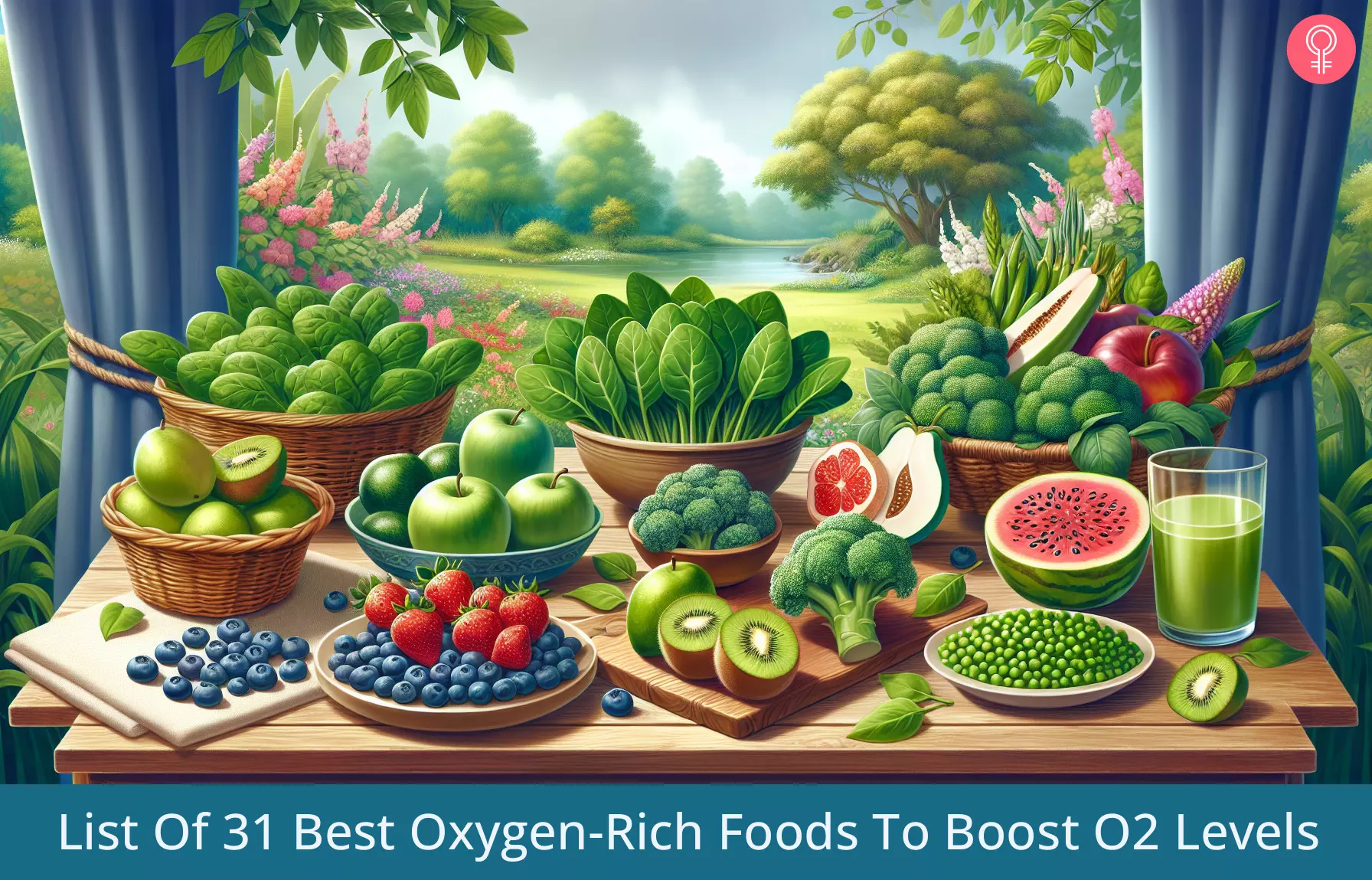
Image: Dall·E/StyleCraze Design Team
References
Articles on StyleCraze are backed by verified information from peer-reviewed and academic research papers, reputed organizations, research institutions, and medical associations to ensure accuracy and relevance. Read our editorial policy to learn more.
- Oxygen—A Critical but Overlooked Nutrient
https://www.ncbi.nlm.nih.gov/pmc/articles/PMC6379287/ - The Search for Optimal Oxygen Saturation Targets in Critically Ill Patients: Observational Data From Large ICU Databases
https://pubmed.ncbi.nlm.nih.gov/31589844/ - Hypoxia
https://www.ncbi.nlm.nih.gov/books/NBK482316/ - Hypoxia suppresses symptom perception in asthma
https://pubmed.ncbi.nlm.nih.gov/15020291/ - Hypoxemia in patients with COPD: cause effects and disease progression
https://pubmed.ncbi.nlm.nih.gov/21660297/ - Silent hypoxia in COVID-19: pathomechanism and possible management strategy
https://pubmed.ncbi.nlm.nih.gov/33891272/ - Fibromyalgia syndrome: overnight falls in arterial oxygen saturation
https://pubmed.ncbi.nlm.nih.gov/8686716/ - Oxygen oxidative stress hypoxia and heart failure
https://www.ncbi.nlm.nih.gov/pmc/articles/PMC1052012/ - The Alkaline Diet: Is There Evidence That an Alkaline pH Diet Benefits Health?
https://www.ncbi.nlm.nih.gov/pmc/articles/PMC3195546/ - Hass Avocado Composition and Potential Health Effects
https://www.ncbi.nlm.nih.gov/pmc/articles/PMC3664913/ - Pomegranates raw
https://fdc.nal.usda.gov/fdc-app.html#/food-details/169134/nutrients - The effect of acute pomegranate extract supplementation on oxygen uptake in highly-trained cyclists during high-intensity exercise in a high altitude environment
https://www.ncbi.nlm.nih.gov/pmc/articles/PMC5452353/ - Effects of pomegranate extract on blood flow and vessel diameter after high-intensity exercise in young healthy adults
https://pubmed.ncbi.nlm.nih.gov/27644475/ - The nutritional and health attributes of kiwifruit: a review
https://www.ncbi.nlm.nih.gov/pmc/articles/PMC6267416/ - Melons cantaloupe raw
https://fdc.nal.usda.gov/fdc-app.html#/food-details/169092/nutrients - Characterization of Polyphenolic Compounds in Cantaloupe Melon By-Products
https://www.ncbi.nlm.nih.gov/pmc/articles/PMC6617032/ - Chemical Composition of Mango (Mangifera indica L.) Fruit: Nutritional and Phytochemical Compounds
https://www.ncbi.nlm.nih.gov/pmc/articles/PMC6807195/ - Mangifera Indica (Mango)
https://www.ncbi.nlm.nih.gov/pmc/articles/PMC3249901/ - Peaches yellow raw
https://fdc.nal.usda.gov/fdc-app.html#/food-details/169928/nutrients - Antioxidant potential of peels and fleshes of peaches from different cultivars
https://pubmed.ncbi.nlm.nih.gov/19857078/ - Pineapple raw all varieties
https://fdc.nal.usda.gov/fdc-app.html#/food-details/169124/nutrients - Potential role of bromelain in clinical and therapeutic applications
https://www.ncbi.nlm.nih.gov/pmc/articles/PMC4998156/ - Blueberries raw
https://fdc.nal.usda.gov/fdc-app.html#/food-details/171711/nutrients - STRAWBERRIES
https://fdc.nal.usda.gov/fdc-app.html#/food-details/546613/nutrients - Raspberries raw
https://fdc.nal.usda.gov/fdc-app.html#/food-details/167755/nutrients - Current evidence on the health-beneficial effects of berry fruits in the prevention and treatment of metabolic syndrome
https://pubmed.ncbi.nlm.nih.gov/27583706/ - Dates medjool
https://fdc.nal.usda.gov/fdc-app.html#/food-details/168191/nutrients - Figs raw
https://fdc.nal.usda.gov/fdc-app.html#/food-details/173021/nutrients - Long-Term Dietary Supplementation of Pomegranates Figs and Dates Alleviate Neuroinflammation in a Transgenic Mouse Model of Alzheimer\’s Disease
https://www.ncbi.nlm.nih.gov/pmc/articles/PMC4373715/ - Consumption of fig fruits grown in Oman can improve memory anxiety and learning skills in a transgenic mice model of Alzheimer\’s disease
https://pubmed.ncbi.nlm.nih.gov/24938828/ - Citrus fruits as a treasure trove of active natural metabolites that potentially provide benefits for human health
https://www.ncbi.nlm.nih.gov/pmc/articles/PMC4690266/ - Influence of muscle oxygenation and nitrate-rich beetroot juice supplementation on O 2 uptake kinetics and exercise tolerance
https://pubmed.ncbi.nlm.nih.gov/32272260/ - Chronic high-dose beetroot juice supplementation improves time trial performance of well-trained cyclists in normoxia and hypoxia
https://pubmed.ncbi.nlm.nih.gov/30685420/ - Carrots raw
https://fdc.nal.usda.gov/fdc-app.html#/food-details/170393/nutrients - Phytochemicals in Daucus carota and Their Health Benefits—Review Article
https://www.ncbi.nlm.nih.gov/pmc/articles/PMC6770766/ - Spinach raw
https://fdc.nal.usda.gov/fdc-app.html#/food-details/1103136/nutrients - Functional properties of spinach (Spinacia oleracea L.) phytochemicals and bioactives
https://pubmed.ncbi.nlm.nih.gov/27353735/ - Health effects of garlic
https://pubmed.ncbi.nlm.nih.gov/16035690/ - The role of garlic in hepatopulmonary syndrome: a randomized controlled trial
https://pubmed.ncbi.nlm.nih.gov/20352147/ - Sweet potato cooked boiled without skin
https://fdc.nal.usda.gov/fdc-app.html#/food-details/168484/nutrients - Sweet potato (Ipomoea batatas) attenuates diet-induced aortic stiffening independent of changes in body composition
https://pubmed.ncbi.nlm.nih.gov/28288284/ - Review on iron and its importance for human health
https://www.ncbi.nlm.nih.gov/pmc/articles/PMC3999603/ - GREEN BEANS
https://fdc.nal.usda.gov/fdc-app.html#/food-details/595148/nutrients - Antioxidant and Anti-inflammatory Activities of Broccoli Florets in LPS-stimulated RAW 264.7 Cells
https://www.ncbi.nlm.nih.gov/pmc/articles/PMC4103733/ - Efficacy of broccoli and glucoraphanin in COVID-19: From hypothesis to proof-of-concept with three experimental clinical cases
https://www.ncbi.nlm.nih.gov/pmc/articles/PMC7770975/ - Lettuce cos or romaine raw
https://fdc.nal.usda.gov/fdc-app.html#/food-details/169247/nutrients - Health effect of vegetable-based diet: lettuce consumption improves cholesterol metabolism and antioxidant status in the rat
https://pubmed.ncbi.nlm.nih.gov/15297097/ - New insights into erythropoiesis: the roles of folate, vitamin B12, and iron
https://pubmed.ncbi.nlm.nih.gov/15189115/ - Effect of Swiss chard (beta vulgaris var. cicla) as nitrite replacement on color stability and shelf-life of cooked pork patties during refrigerated storage
https://www.ncbi.nlm.nih.gov/pmc/articles/PMC5516069/ - Nitrate ingestion: a review of the health and physical performance effects
https://www.ncbi.nlm.nih.gov/pmc/articles/PMC4245587//a> - Egg whole cooked hard-boiled
https://fdc.nal.usda.gov/fdc-app.html#/food-details/173424/nutrients - Anti-inflammatory and analgesic effects of egg yolk: a comparison between organic and machine made
https://pubmed.ncbi.nlm.nih.gov/23467945/ - Legumes: Health Benefits and Culinary Approaches to Increase Intake
https://www.ncbi.nlm.nih.gov/pmc/articles/PMC4608274/ - Mushrooms white raw
https://fdc.nal.usda.gov/fdc-app.html#/food-details/169251/nutrients - Edible Mushrooms: Improving Human Health and Promoting Quality Life
https://www.ncbi.nlm.nih.gov/pmc/articles/PMC4320875/ - What is the role of meat in a healthy diet?
https://www.ncbi.nlm.nih.gov/pmc/articles/PMC7015455/ - Seafood Consumption and Components for Health
https://www.ncbi.nlm.nih.gov/pmc/articles/PMC4776937/ - Vitamin B12 in Health and Disease
https://www.ncbi.nlm.nih.gov/pmc/articles/PMC3257642/ - Dietary Iron
https://www.ncbi.nlm.nih.gov/books/NBK540969/ - Meat Meat Products and Seafood as Sources of Energy and Nutrients in the Average Polish Diet
https://www.ncbi.nlm.nih.gov/pmc/articles/PMC6213018/ - Yogurt: role in healthy and active aging
https://pubmed.ncbi.nlm.nih.gov/24695886/ - Milk and dairy products: good or bad for human health? An assessment of the totality of scientific evidence
https://www.ncbi.nlm.nih.gov/pmc/articles/PMC5122229/ - Nuts pecans
https://fdc.nal.usda.gov/fdc-app.html#/food-details/170182/nutrients - Seeds sunflower seed kernels dried
https://fdc.nal.usda.gov/fdc-app.html#/food-details/170562/nutrients - Health benefits of nut consumption
https://pubmed.ncbi.nlm.nih.gov/22254047/ - A review of phytochemistry metabolite changes and medicinal uses of the common sunflower seed and sprouts (Helianthus annuus L.)
https://www.ncbi.nlm.nih.gov/pmc/articles/PMC5622016/ - Whole Grains and Phenolic Acids: A Review on Bioactivity, Functionality, Health Benefits and Bioavailability
https://www.ncbi.nlm.nih.gov/pmc/articles/PMC6265897/ - Chapter 13 Turmeric the Golden Spice
https://www.ncbi.nlm.nih.gov/books/NBK92752/ - Chapter 2 The Circulatory System and Oxygen Transport
https://www.ncbi.nlm.nih.gov/books/NBK54112/
Read full bio of Mayuri Aavula
- Amy Fox is a Certified Nutritionist and Certified Functional Food Professional with 3 years of experience. She is also the founder of Food and Mood Lab. She has been researching the connection between food and mood for decades and started one-on-one coaching three years ago.
 Amy Fox is a Certified Nutritionist and Certified Functional Food Professional with 3 years of experience. She is also the founder of Food and Mood Lab. She has been researching the connection between food and mood for decades and started one-on-one coaching three years ago.
Amy Fox is a Certified Nutritionist and Certified Functional Food Professional with 3 years of experience. She is also the founder of Food and Mood Lab. She has been researching the connection between food and mood for decades and started one-on-one coaching three years ago.
Read full bio of Arshiya Syeda
Read full bio of Himanshi Mahajan







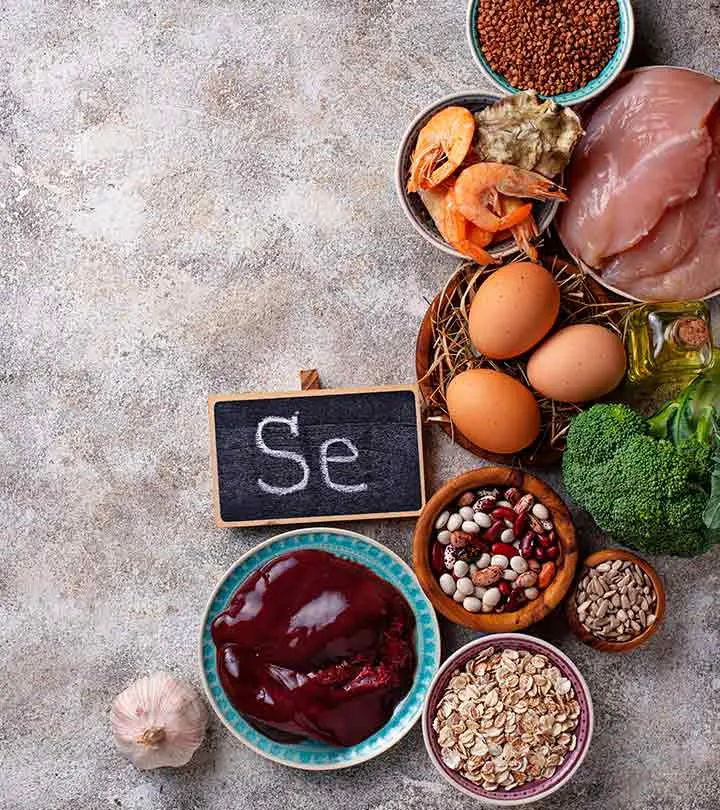
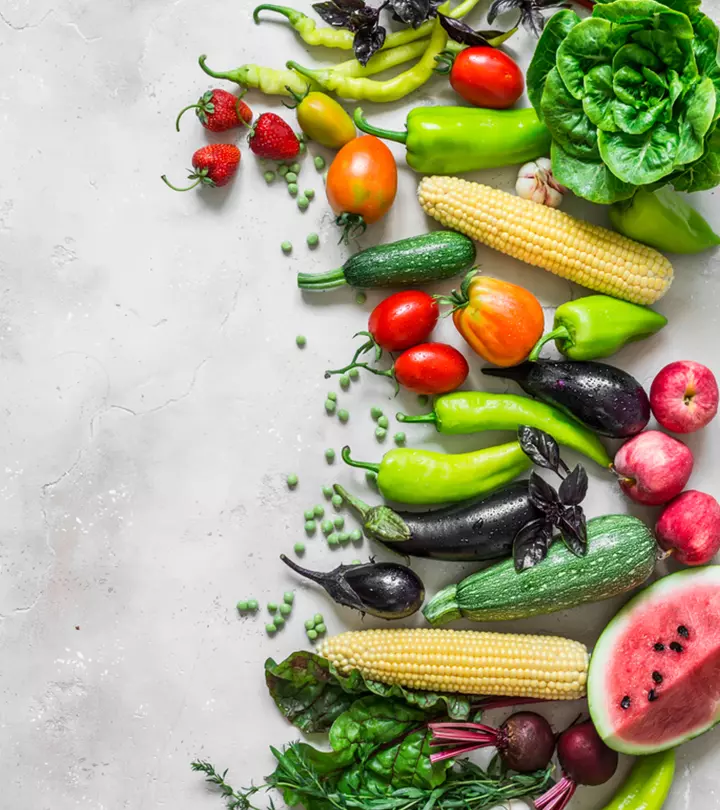

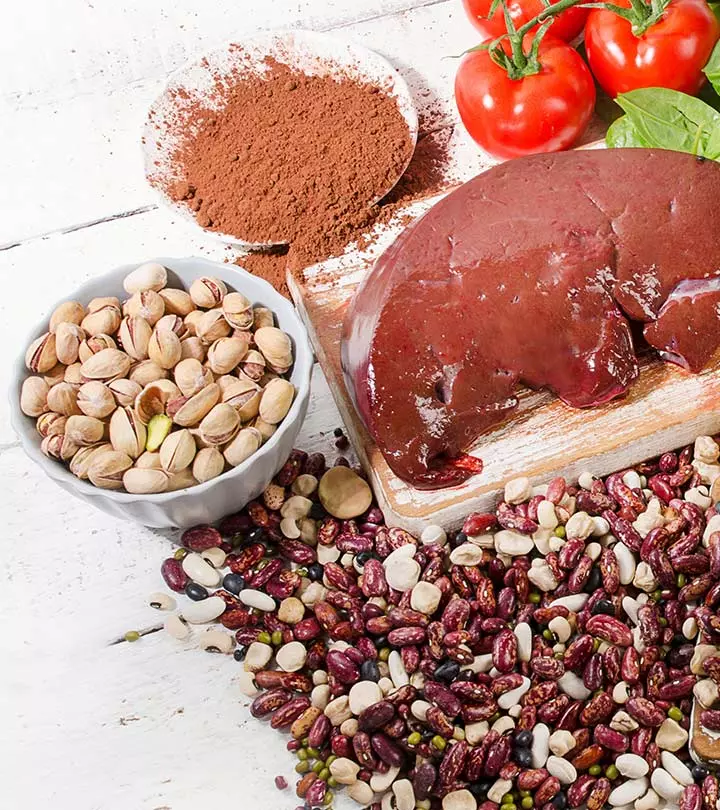

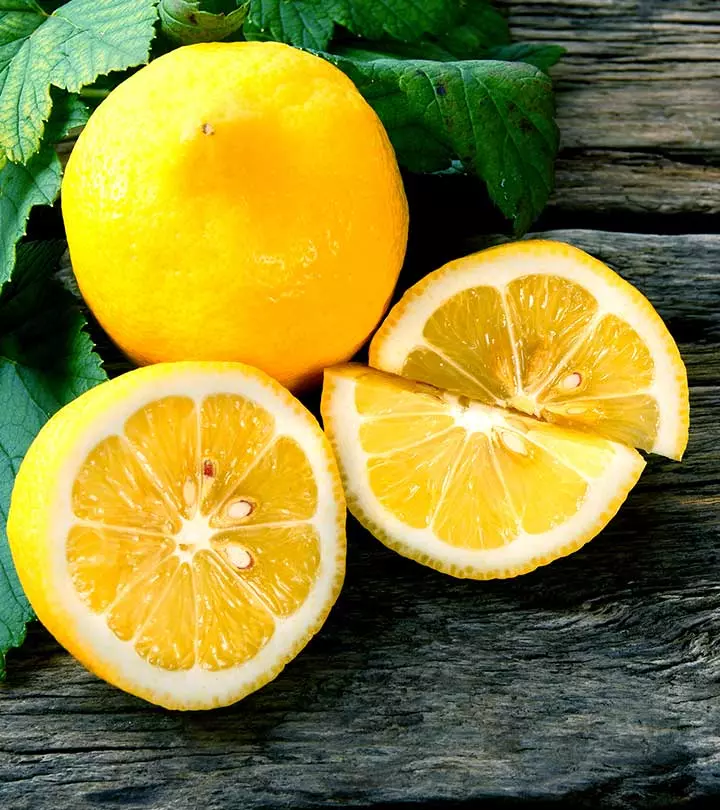
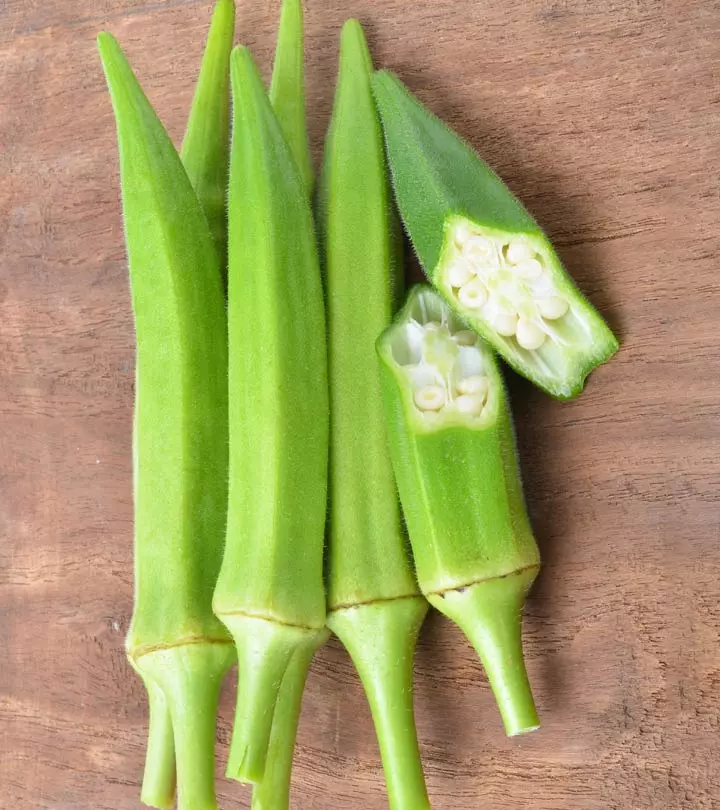
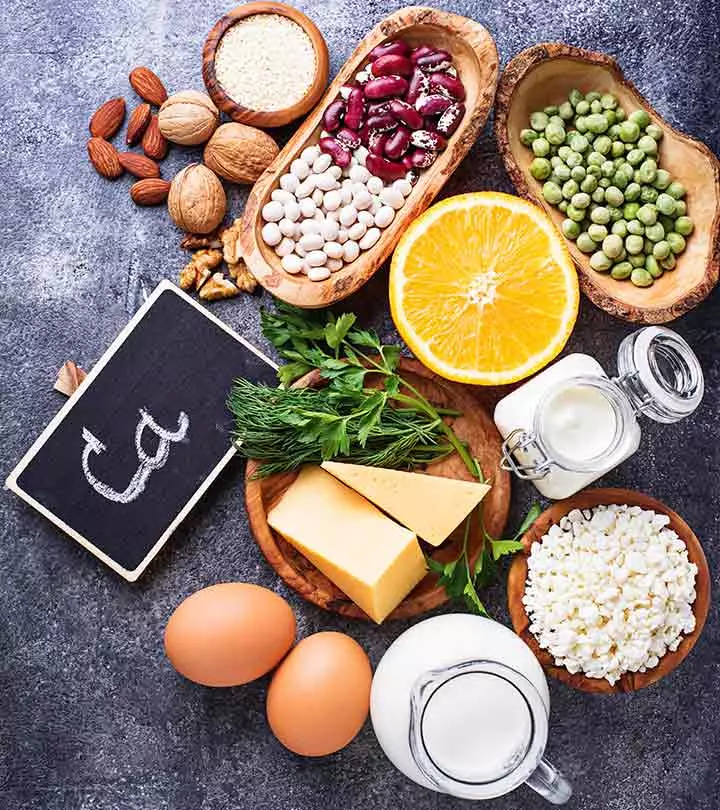
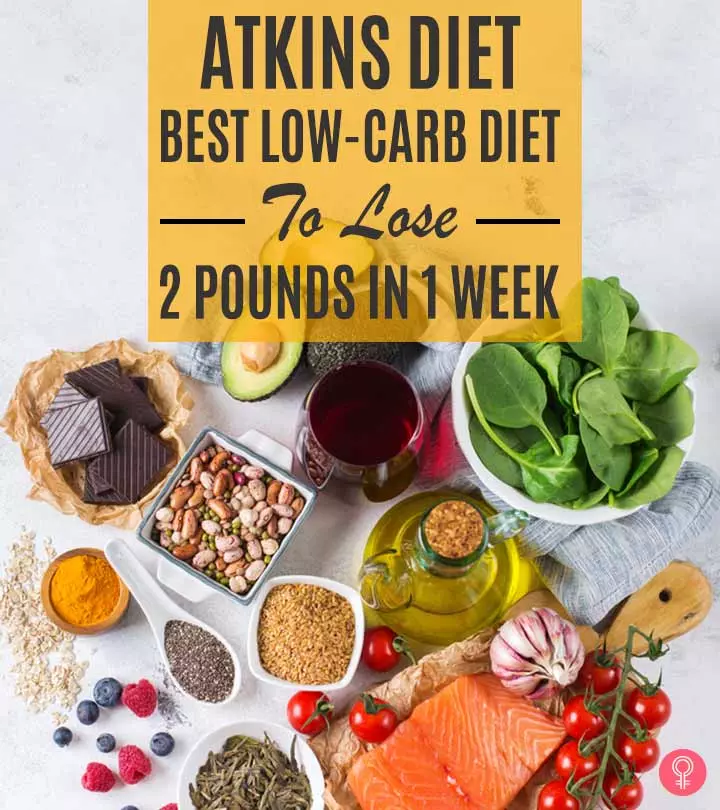


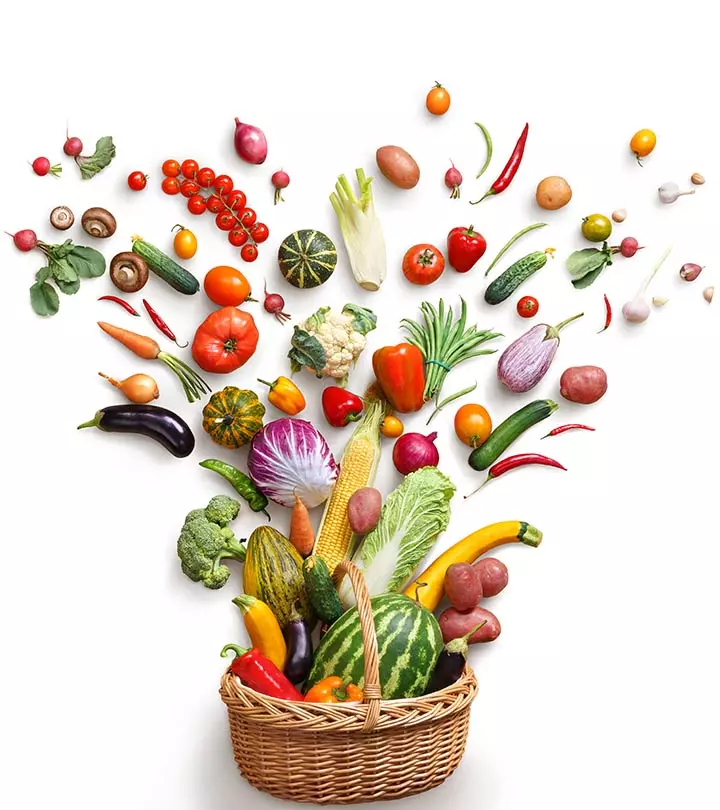








Community Experiences
Join the conversation and become a part of our empowering community! Share your stories, experiences, and insights to connect with other beauty, lifestyle, and health enthusiasts.